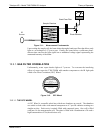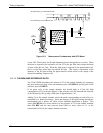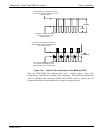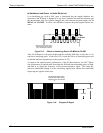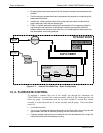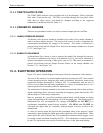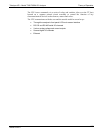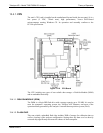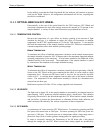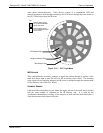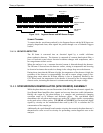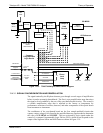
Theory of Operation Teledyne API – Model T300/T300M CO Analyzer
306
13.3.2. PARTICULATE FILTER
The T300/T300M Analyzer comes equipped with a 47 mm diameter, Teflon, particulate
filter with a 5 micron pore size. The filter is accessible through the front panel, which
folds down to allow access, and should be changed according to the suggested
maintenance schedule described in Table 11-1.
13.3.3. PNEUMATIC SENSORS
There are two pneumatic sensors: one each to measure sample pressure and flow.
13.3.3.1. SAMPLE PRESSURE SENSOR
An absolute value pressure
transducer plumbed to the outlet of the sample chamber is
used to measure sample pressure. The output of the sensor is used to compensate the
concentration measurement for changes in air pressure. This sensor is mounted to a
printed circuit board with the Sample Flow Sensor on the sample chamber (see Section
13.3.3.2 and Figure 3-4).
13.3.3.2. SAMPLE FLOW SENSOR
A ther
m
al-mass flow sensor is used to measure the sample flow through the analyzer.
The sensor is calibrated at the factory with ambient air or N
2
, but can be calibrated to
operate with samples consisting of other gases such as CO. This sensor is mounted to a
printed circuit board with the Sample Pressure Sensor on the sample chamber (see
Section 13.3.3.1 and Figure 3-4).
13.4. ELECTRONIC OPERATION
Figure 13-9 shows a block diagram of the major electronic components of the analyzer.
The core of the analyzer is a microcomputer/central processing unit (CPU) that controls
various internal processes, interprets data, makes calculations, and reports results using
specialized firmware developed by Teledyne API. It communicates with the user as
well as receives data from and issues commands to a variety of peripheral devices via a
separate printed circuit assembly called the motherboard.
The motherboard is directly mounted to the inside rear panel and collects data, performs
signal conditioning duties and routes incoming and outgoing signals between the CPU
and the analyzer’s other major components.
Data are generated by a gas-filter-correlation optical bench which outputs an analog
signal corresponding to the concentration of CO in the sample gas. This analog signal is
transformed into two, pre-amplified, DC voltages (CO MEAS and CO REF) by a
synchronous demodulator printed circuit assembly. CO MEAS and CO REF are
converted into digital data by a unipolar, analog-to-digital converter, located on the
motherboard.
A variety of sensors report the physical and operational status of the analyzer’s major
components, again through the signal processing capabilities of the motherboard. These
status reports are used as data for the CO concentration calculation and as trigger events
for certain control commands issued by the CPU. This information is stored in memory
by the CPU and in most cases can be viewed but the user via the front panel display.
06864B DCN6314




